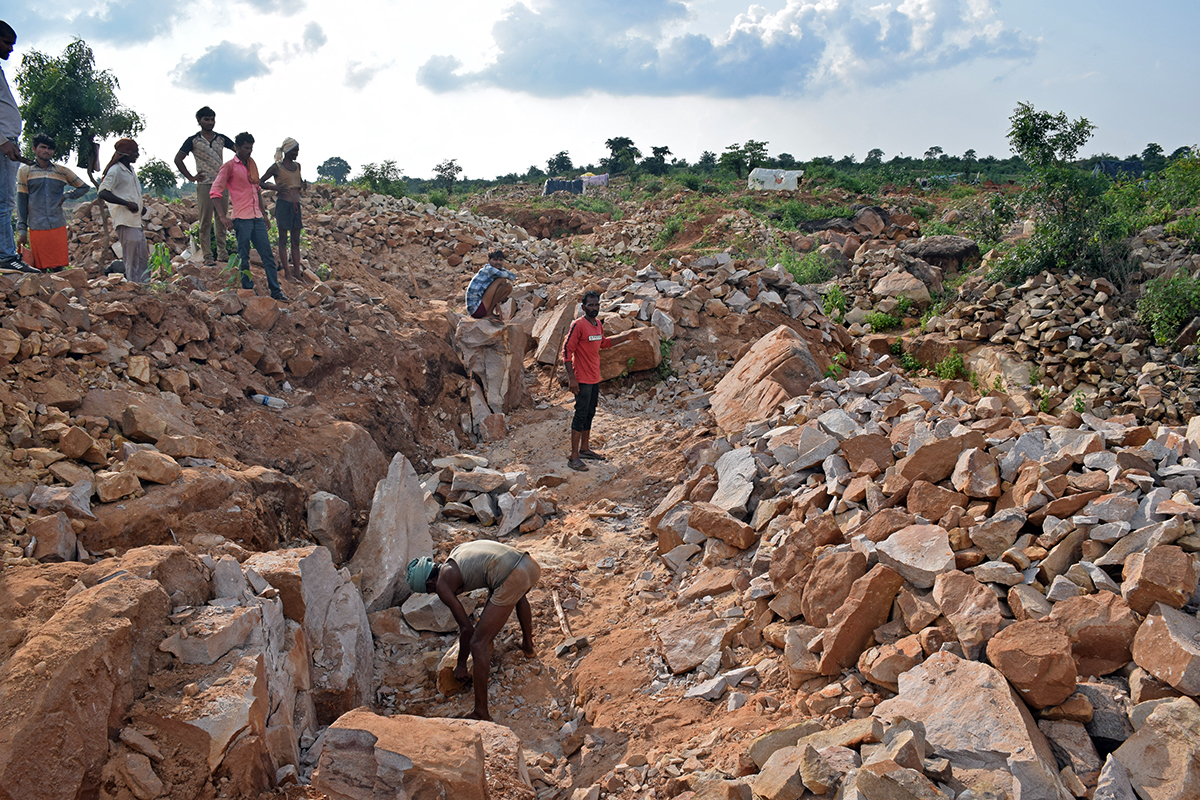In the heart of Madhya Pradesh lies Panna, a district whose history is intertwined with both the splendor and challenges of diamond mining. Panna’s residents, many of whom live in some of India’s most impoverished conditions, navigate a world of scarcity and hardship. The region’s lack of basic necessities such as clean water and employment opportunities is a stark reality for its inhabitants. Yet, amid these trials, the allure of diamonds has long provided hope, creating a unique bond between the community and the earth beneath their feet.
For over 3,000 years, India was the world’s sole source of diamonds. The discovery of diamonds in places like Brazil and South Africa in the 18th century may have shifted global attention, but the name Panna remains synonymous with diamond hunting in India. This enduring legacy is both a symbol of fortune and a testament to the grit of its people. At the heart of this story are individuals like Prakash Sharma, a 67-year-old diamond hunter whose passion for searching the mines is all-consuming. Sharma’s journey into diamond hunting began in 1974, shortly after completing school. Following in the footsteps of his father, a renowned diamond miner, Sharma unearthed a six-carat diamond early in his career, an event that ignited a lifelong obsession. Today, he continues to spend his days in Panna’s shallow mines, unwavering in his pursuit of hidden gems.
Panna’s diamond industry operates within a delicate balance of government oversight and small-scale mining operations. While the majority of its reserves are controlled by the state, miners like Sharma lease small plots of land annually at affordable rates, hoping to strike it rich. The district is also home to the Majhgawan mine, India’s only mechanized diamond mine, which has been managed by the National Mineral Development Corporation (NMDC) since 1968. By 2024, the NMDC had extracted over 1.3 million carats of diamonds from the area. However, despite the region’s long history with diamonds, the depletion of its reserves is an undeniable reality. Years of over-mining have taken their toll, and the large, rare stones that once defined Panna’s mines are now few and far between.
Despite this decline, the dream of finding diamonds persists. Thousands of men and women wake each morning and make their way to the mines, hoping that the next shovel full of gravel will reveal the glimmer of a diamond. The process is physically demanding, involving hours of sifting through gravel, washing, drying, and inspecting it by hand. Often, entire families are involved, with children and elders alike playing a role in the hunt. The work is not for the faint-hearted, but for the people of Panna, it represents a rare opportunity to break the cycle of poverty that has gripped the region for generations.
The fruits of these labors, however, must pass through government channels. Once found, diamonds must be submitted to the government’s diamond office for evaluation. The stones are then auctioned, and after taxes and royalties are deducted, the remaining profits are distributed back to the miners. It’s a slow process, and the wait for payment can be long and frustrating. Still, the chance of discovering a valuable stone keeps miners coming back year after year.
Sharma’s story is far from unique. Panna’s mines are filled with stories of hope, perseverance, and family traditions that stretch back generations. For 58-year-old Shyamlal Jatav, diamond mining is in his blood. His grandfather began mining decades ago, and now Jatav’s son splits his time between his studies and working part-time in the mines. Although Jatav’s family has found diamonds over the years, the prices they once fetched pale in comparison to the fortunes that can now be made. Today, diamonds from Panna can sell for tens of millions of rupees, transforming the lives of those lucky enough to find them.
One such lucky miner is Raja Gound, a laborer who, in July, uncovered a 19.22-carat diamond after more than a decade of hard work. The stone sold for approximately 8 million rupees ($95,000), enough to erase Gound’s debts and secure his financial future. Stories like Gound’s are rare, but they fuel the hopes of miners who continue to endure the backbreaking labor of diamond hunting.
Despite Panna’s rich history in the diamond industry, much of its modern trade occurs outside the official channels. Many miners, wary of the taxes and the long wait times associated with government auctions, choose to sell their diamonds on the black market. Though authorities have made efforts to curb illegal sales, the practice remains widespread, and the extent of the underground trade is difficult to quantify.
Ravi Patel, Panna’s mining officer, acknowledges the challenge of policing the illegal diamond trade. He notes that many of the diamonds mined in the region are small and do not fetch high prices, making them harder to track. However, Patel also points to a significant drop in the number of diamonds submitted for auction in recent years. In 2016, the government’s diamond office received 1,133 stones; by 2023, that number had plummeted to just 23. This decline is partly attributed to the increased restrictions on mining in certain areas, particularly around the Panna Tiger Reserve.
The reserve, home to over 50 tigers, has been the focus of conservation efforts in recent years, leading to the designation of large swaths of forested land as no-go zones for miners. These restrictions have forced miners out of once-lucrative areas and into more challenging terrain. Those caught mining in the reserve’s buffer zones face steep penalties, but the lure of diamonds remains irresistible for many.
For men like Prakash Majumdar, the mines of Panna represent both a lifeline and a new beginning. Majumdar turned to diamond hunting in 2020 after losing his job during the Covid-19 lockdown. Within a month, he found his first diamond, valued at 2.9 million rupees. That find changed his life, allowing him to move his family into a concrete home and secure a future free from financial uncertainty. Now the elected head of his village, Majumdar remains a fixture in the mines, driven by the same hope that sustains thousands of others in Panna. In many ways, the story of Panna’s diamond hunters is a microcosm of India’s larger relationship with the precious stones. It is a story of grit, perseverance, and an unshakeable belief in the possibility of a better life. While the diamonds may be growing scarcer, the dreams they inspire remain as bright as ever.









